 MyDogBreeds
MyDogBreeds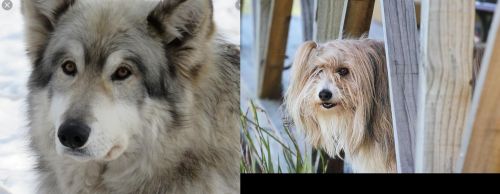 Wolfdog is originated from Germany but Smithfield is originated from United Kingdom. Wolfdog may grow 23 cm / 10 inches higher than Smithfield. Wolfdog may weigh 20 kg / 45 pounds more than Smithfield. Both Wolfdog and Smithfield has almost same life span. Both Wolfdog and Smithfield has almost same litter size. Both Wolfdog and Smithfield requires Moderate maintenance.
Wolfdog is originated from Germany but Smithfield is originated from United Kingdom. Wolfdog may grow 23 cm / 10 inches higher than Smithfield. Wolfdog may weigh 20 kg / 45 pounds more than Smithfield. Both Wolfdog and Smithfield has almost same life span. Both Wolfdog and Smithfield has almost same litter size. Both Wolfdog and Smithfield requires Moderate maintenance.
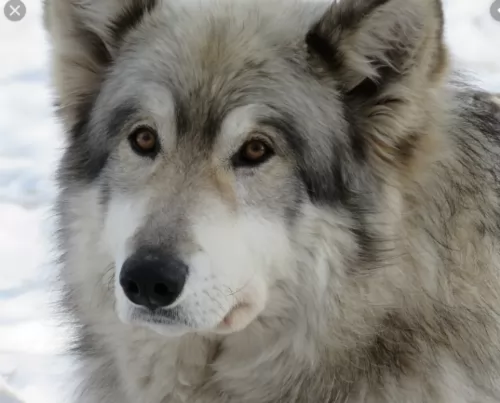 The Wolfdog was brought about when domestic dogs were mated with a variety of wolves so as to produce a hybrid.
The Wolfdog was brought about when domestic dogs were mated with a variety of wolves so as to produce a hybrid.
People who want to own these hybrids have to be careful because they find that the unpredictable behavior of their pets makes it difficult for them to care for them.
Then they want to get rid of it. Every year, heaps of these hybrids are abandoned due to humans interfering with nature.
The wolfdog has been bred with a number of dogs but we think about it more in terms of wolf and German shepherd.
 The Smithfield is also known as the Smithfield, Smithy or Tasmanian Smithfield and is a herding dog found in Australia but originating in the UK. There is also the possibility that there was an Australian dog bred at a place known as Smithfield, near Texas which is just inside the Queensland border.
The Smithfield is also known as the Smithfield, Smithy or Tasmanian Smithfield and is a herding dog found in Australia but originating in the UK. There is also the possibility that there was an Australian dog bred at a place known as Smithfield, near Texas which is just inside the Queensland border.
It is thought by some that the Smithfield is extinct. The dog was first introduced to the Land Down Under in colonial times.
The Smithfield isn’t recognised by the Canine Councils, but in 1862 the first Dog Show was held in Australia.
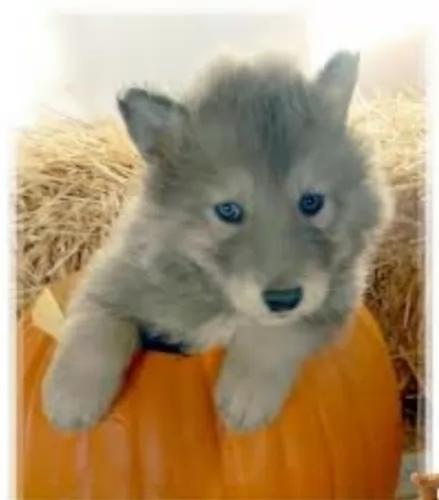 People mesmerized by the wolf long to bring some of that wildness home, and the wolfdog is supposed to do this.
People mesmerized by the wolf long to bring some of that wildness home, and the wolfdog is supposed to do this.
Their looks differ a lot, even those that come from the same litter. You can’t have a predictable looking wolf dog because it could be any domestic dog bred with a wolf so they display a large variety of appearances.
Most Wolfdogs seem to have smaller heads than pure wolves. The ears seem to be bigger and more pointy.
A popular wolfdog mix is a German Shepherd mixed with the wolf. These dogs can be between 70 to 76cm in height and weigh between 40 and 45kg.
Their coat is thick and can be in colors of grey, cream, red, white, dark brown and black.
While the wolfdog can be trained to become quite a friendly kind of dog, it is not suitable for the first time dog owner. It can show bouts of aggressiveness around strangers and be highly protective of its family.
However, this can be helped with early socialization and training. It is illegal to own the wolfdog in some states. You don’t want to leave a wolfdog alone with your children even though the dog is capable of love and loyalty towards his human family.
 The Smithfield is a medium to large sized dog, strong and square-bodied with a wedge shaped head. Many people liken his looks to a Bearded Collie.
The Smithfield is a medium to large sized dog, strong and square-bodied with a wedge shaped head. Many people liken his looks to a Bearded Collie.
He has a rough, medium length coat. The coat has different colors such as white, black, grey or reddish brown. The coat is shaggy and in fact they are often clipped to give them a groomed look and to prevent grass and burrs clinging to the coat.
The tail of the dog can either be a natural bobtail or it could have a longer tail. When the tail is long it is carried low with an upward turn at the tip. The ears are mostly floppy and held close to the head.
He stands at between 46 to 53cm in height and weighs between 16 and 25kg. A bright, alert expression is a distinctive feature of the Smithfield.
The Smithfield is an active, robust dog and they have well balanced, stable personalities. They are often described as being laid-back.
You won’t find any signs of shyness or aggression with these dogs and they are known to be gentle and calm. They are self confident and well adjusted and also hard working.
They are devoted and loving to their human family and are also intelligent. When they’ve been trained and socialized they make splendid family pets, wonderful with children, just loving to run and play. These are dogs you can rely on to be consistent in nature.
 When you add the genes of a wild animal to the pool, you get a crossbreed and when its an animal from the wild, its nature is unpredictable.
When you add the genes of a wild animal to the pool, you get a crossbreed and when its an animal from the wild, its nature is unpredictable.
Many people don’t think about the consequences of what they do when they interfere with nature and the wolfdog gets put down when it behaves like a wild animal and attacks or bites out of defense.
Yes, they can be loyal, loving pets but always you will have the shadow of the dog or wolf’s unpredictable behavior.
There is a reason why these dogs are banned in a number of states. This dog-type-wolf breed is not recommended as a pet at all – take a look at animal shelters and the number of wolf dogs there and ask yourself why.
 Those who have owned a Smithfield love them and say that once you’ve owned one, you’ll want another.
Those who have owned a Smithfield love them and say that once you’ve owned one, you’ll want another.
These easy going dogs have all the characteristics necessary to ensure a good pet, playmate and companion. They are devoted to their human family, and given the chance will become a very special 4-legged member of any family who appreciates the friendship a such a dog offers.
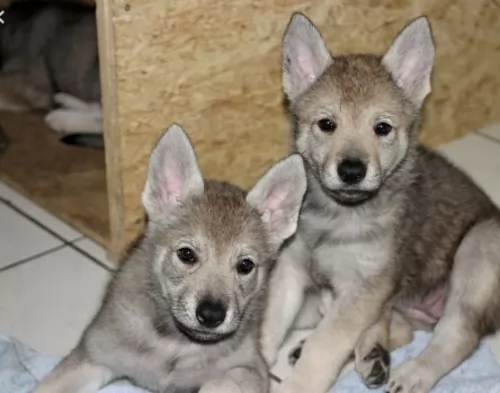 They will also be susceptible to common dog ailments such as parasites and hip dysplasia.
They will also be susceptible to common dog ailments such as parasites and hip dysplasia.
Like any other dog, these Wolf dogs will also possibly develop tumors. He will also need to be vaccinated against harmful diseases and you will need to have a reliable local vet who is interested in your wolf dog.
 These dogs enjoy exceptional good health and can reach between 10 and 14 years of age.
These dogs enjoy exceptional good health and can reach between 10 and 14 years of age.
You have to be careful with your pet however, because there are quite a few common dog illnesses that can plague your pet, and we look at a few -
This is caused by a contagious virus. Infected dogs develop symptoms such as runny eyes, fever, coughing, vomiting and even seizures. Unfortunately this disease is often fatal. There is luckily a vaccine against it and it is highly recommended for your pet.
Also a very contagious disease which attacks the gastrointestinal system, causing fever, vomiting and diarrhea. It is often spread by contaminated stools and feeding utensils of dogs. Many dogs die from parvo but there is also a vaccine against it.
This is terrible for your pet and is a huge risk for dogs during Summer. Never leave your pet in a car unattended, especially on a hot day. Remember that stub-nosed dogs such as Boxers, Pugs, Bulldogs and Boston Terriers are more prone to respiratory problems and heat can be deadly for them.
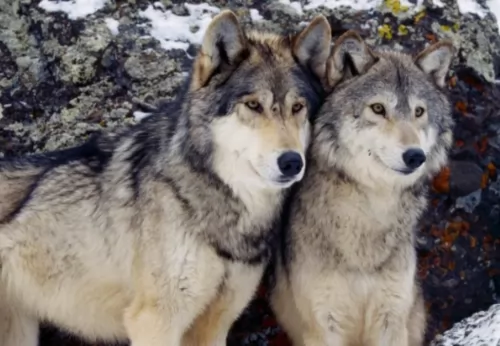 If you own a wolfdog the same care procedures would need to be followed as you would with a regular dog.
If you own a wolfdog the same care procedures would need to be followed as you would with a regular dog.
A wolfdog, however, can’t be vaccinated against rabies. It seems that the reason for this is that it is due to current legislation, and vaccine manufacturers don’t want to support wolf dogs as pets because they are considered to be dangerous.
Provide your wolfdog with highly nutritional, protein-based food. You don’t want to feed your wolfdog any of the low quality, traditional store-bought food high in carbs and artificial additives. Instead, look for a diet rich in proteins and be sure to give this dog some raw meat occasionally.
The dog is active and you will need to provide heaps of exercise for him, both mental and physical activities.
The wolfdog will require training but it will require dedication, though it can be done as the dog is very intelligent.
Even with training, the wolfdog isn’t suited to life in the city but should be kept in the countryside.
 The Smithfield has plenty of energy and loves nothing more than lots of games with the children. He will also look forward to a walk every day as well as other activities.
The Smithfield has plenty of energy and loves nothing more than lots of games with the children. He will also look forward to a walk every day as well as other activities.
When it comes to grooming, you can save money by grooming your dog at home. Whether you have your pet’s hair cut or you leave it as is, get into the habit of brushing the fur at least twice a week. You can speak to your vet or groomer and get advice on what comb of brush to use on your Smithfield.
It you want to cut your pet’s hair, it is important to use the right equipment so you don't accidentally injure him. Certainly if you feel unsure about shaving your dog at home, leave this grooming aspect to the experts.
Check your pet’s eyes. They must be clear and bright. Check inside his mouth for bad teeth. Check inside his ears to make sure they aren’t red with infection.
Your Smithfield is relying on you to provide him with good food. For convenience, it is always a good idea to have a packet of the best dry kibble there is. Check out the label and make sure to buy one that has a good balance of vitamins and minerals.
Give him some tasty homemade food too. Remember to keep it plain and simple. Boiled chicken, brown rice or pasta and spinach, sweet potatoes and carrots are nutritious and tasty. This food can all be chopped up and small portions added to the dry kibble twice a week as a treat.
You’ll never have to worry about digestion problems with your dog. A little bit of raw meat can also go a long way to ensuring his skin stays healthy and free of skin infections. Ensure that he has a constant supply of fresh, cool water.